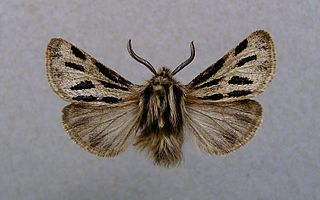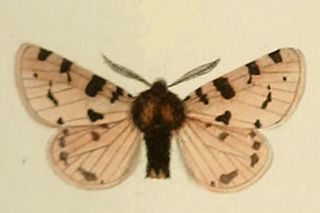| Ocnogyna | |
|---|---|
 | |
| Ocnogyna parasita | |
| Scientific classification | |
| Domain: | Eukaryota |
| Kingdom: | Animalia |
| Phylum: | Arthropoda |
| Class: | Insecta |
| Order: | Lepidoptera |
| Superfamily: | Noctuoidea |
| Family: | Erebidae |
| Subfamily: | Arctiinae |
| Subtribe: | Spilosomina |
| Genus: | Ocnogyna Lederer, 1853 |
| Type species | |
| Chelonia zoraida Graslin, [1837] 1836 | |
| Synonyms | |
| |
Ocnogyna is a genus of moths in the family Erebidae from western Eurasia. The genus was erected by Julius Lederer in 1853. One aberrant species, Ocnogyna parasita , has females with non-functional wings, and because of this was formerly placed in its own genus Somatrichia, but is now in Ocnogyna. [1]

